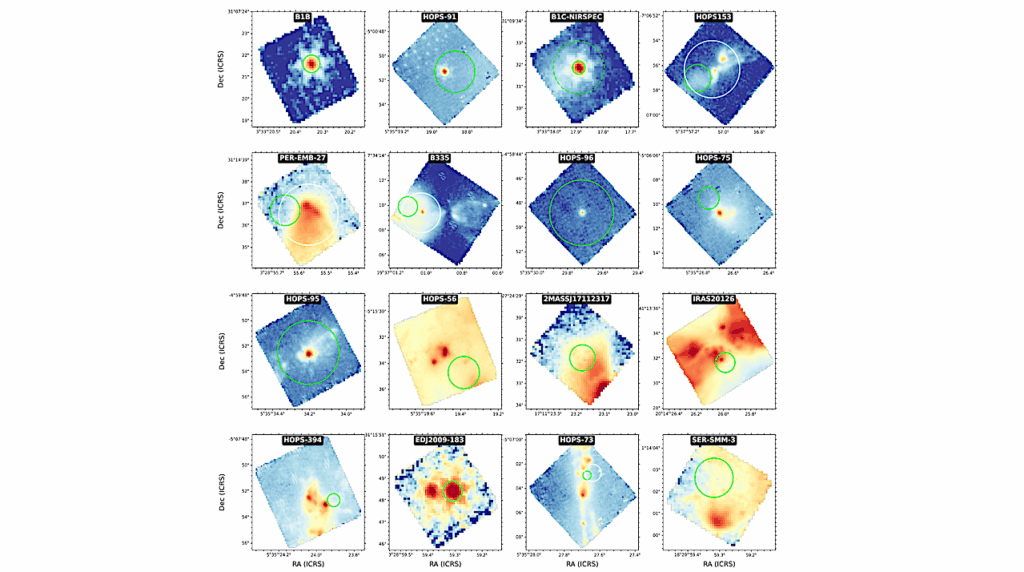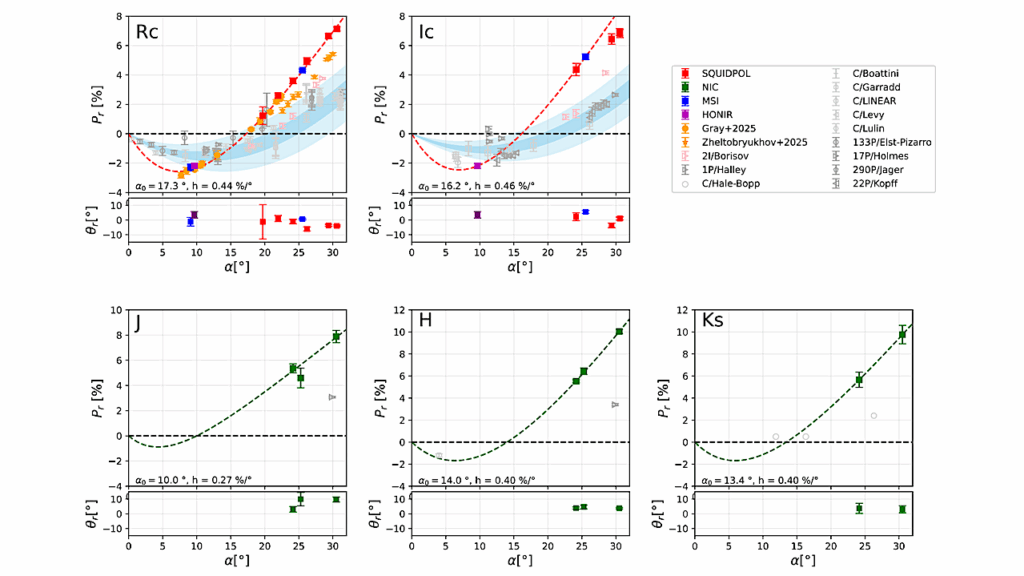Complex organic molecules in protoplanetary disks

Protoplanetary disks are vital objects in star and planet formation, possessing all the material which may form a planetary system orbiting the new star.
We investigate the synthesis of complex organic molecules (COMs) in disks to constrain the achievable chemical complexity and predict species and transitions which may be observable with ALMA. We have coupled a 2D model of a protoplanetary disk around a T Tauri star with a gas-grain chemical network including COMs.
We compare compare synthesised line intensities and calculated column densities with observations and determine those COMs which may be observable in future. COMs are efficiently formed in the disk midplane via grain-surface chemical reactions, reaching peak grain-surface fractional abundances 1e-6 – 1e-4 that of the H nuclei number density. COMs formed on grain surfaces are returned to the gas phase via non-thermal desorption; however, gas-phase species reach lower fractional abundances than their grain-surface equivalents, 1e-12 – 1e-7. Including the irradiation of grain mantle material helps build further complexity in the ice through the replenishment of grain-surface radicals which take part in further grain-surface reactions.
There is reasonable agreement with several line transitions of H2CO observed towards several T Tauri star-disk systems. The synthesised line intensities for CH3OH are consistent with upper limits determined towards all sources. Our models suggest CH3OH should be readily observable in nearby protoplanetary disks with ALMA; however, detection of more complex species may prove challenging. Our grain-surface abundances are consistent with those derived from cometary comae observations providing additional evidence for the hypothesis that comets (and other planetesimals) formed via the coagulation of icy grains in the Sun’s natal disk.
Catherine Walsh (1,2), T. J. Millar (2), Hideko Nomura (3), Eric Herbst (4), Susanna L. Widicus Weaver (5), Yuri Aikawa (6), Jake C. Laas (5), Anton I. Vasyunin (7) ((1) Leiden Observatory, The Netherlands, (2) School of Mathematics and Physics, Queen’s University Belfast, UK, (3) Department of Earth and Planetary Sciences, Tokyo Institute of Technology, Japan, (4) Departments of Chemistry, Astronomy, and Physics, University of Virginia, USA, (5) Department of Chemistry, Emory University, USA (6) Department of Earth and Planetary Sciences, Kobe University, Japan (7) Department of Chemistry, University of Virginia, USA) (Submitted on 3 Mar 2014)
Comments: 34 pages, 12 figures, 7 tables
Subjects: Earth and Planetary Astrophysics (astro-ph.EP); Galaxy Astrophysics (astro-ph.GA)
Journal reference: Walsh et al. 2014, A&A, 536, A33 (available here: http://www.aanda.org/articles/aa/abs/2014/03/aa22446-13/aa22446-13.html) DOI: 10.1051/0004-6361/201322446
Cite as: arXiv:1403.0390 [astro-ph.EP] (or arXiv:1403.0390v1 [astro-ph.EP] for this version)








